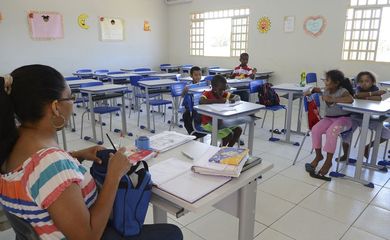Affirmative action changes “face of Brazil’s universities,” study says

Brazil, a country with 112.7 million black and brown people (55.2% of the population) and over 1.6 million indigenous people, took a long time to recognize its ethno-racial diversity among university students. But in the past 20 years, affirmative action has changed the profile of Brazilian universities, helping to correct this limitation and positively transform the spaces responsible for knowledge and the education of new generations, according to sociologists Luiz Augusto Campos and Márcia Lima.

Campos and Lima are the editors of the book Impacto das Cotas: duas décadas de ação afirmativa no ensino superior brasileiro (The Impact of Quotas: Two Decades of Affirmative Action in Brazilian Higher Education), which offers a detailed assessment of the policy and highlights ongoing challenges, such as student retention.
In the book, they compiled 35 articles that review the policy from its origins, beginning with a 1987 bill introduced by then-Congressman Abdias Nascimento—shortly after his return from exile in the United States—proposing the application of affirmative action in education.
Since then, a sector once dominated by young white students from the middle and upper classes until the late 1990s has come to include a majority of black, brown, and indigenous students, who made up 52.4 percent of public university enrollment in 2021, up from 31.5 percent in 2001. Over the same period, the share of students from socioeconomic classes D and E rose from 20 percent to 52 percent, highlighting the economic dimension of the shift.
These advances are detailed in the book, where the researchers show that quota policies have transformed one of the most elitist spaces in Brazilian society—the university—by democratizing access and redefining its social function.
In the book’s preface, Nilma Lino Gomes, a professor and the first black woman to lead a Brazilian university, pointed out that the policy confronted resistance from the National Congress and conservative sectors of society until the quota law (Law 12.711) was enacted in 2012, with backing from the Federal Supreme Court.
Since then, Gomes observed, “they have not only expanded access to universities, but also brought about changes in teaching and curricular practices, destabilizing exclusionary structures in the educational system.”
“After the adoption of affirmative action, especially in the form of quotas, federal higher education institutions began to take a firmer stance against inequalities—not only in discourse but also through concrete practices in academic management, curricula, retention policies, the creation of Affirmative Action Offices, resource distribution criteria, disciplinary standards, research, extension, internationalization, combating rights violations, and confronting racism, LGBTphobia, and sexism,” said the professor.
Updated law
Law 12.711 of 2012, known as the Quota Law, established that half of the places in federal educational institutions should be reserved for students from public schools, based on their ethno-racial and socioeconomic profiles. The law was updated in 2023 to reinforce the priority of quota holders in receiving essential support to remain in university, such as scholarships and housing assistance, which help them sustain themselves.
The book also highlights the role of civil society in adopting the measure. In addition to citing human rights activist Abdias Nascimento, it mentions the Zumbi dos Palmares March in the 1990s and the United Nations (UN) World Conference against Racism, Racial Discrimination, Xenophobia, and Intolerance held in South Africa in 2001. From the perspective of private universities, it cites the impact of the University for All Program (Prouni) in 2005, which granted undergraduate scholarships in exchange for tax benefits and contributed to changing the student profile.
Myths that marked the beginning of the policy—such as the alleged poor performance of quota students, which was said to lower university standards—are also revisited and refuted. The texts show that although quota students may enter with slightly lower scores on the National High School Exam (Enem), their performance is comparable to that of other students. Performance was measured by semester grades. “Different measures show that quota and non-quota students tend to have very similar university performance, as well as similar dropout rates,” say sociologists Campos and Lima.
The work is the result of a collaboration between eight research centers across Brazil, coordinated by Afro Cebrap and the Multidisciplinary Study Group on Affirmative Action (Gemaa), linked to the State University of Rio de Janeiro (UERJ)—the first institution to adopt a quota system for student admission.





